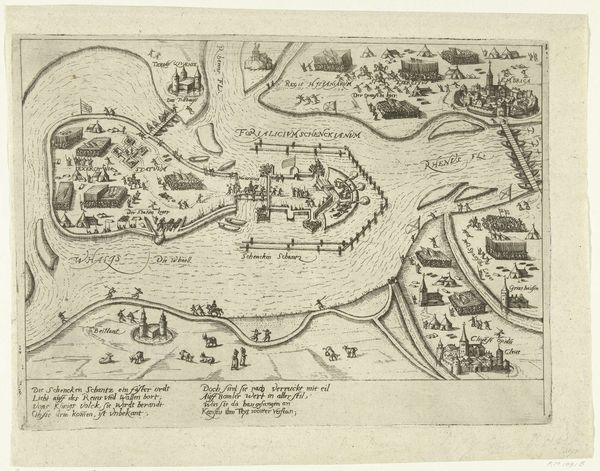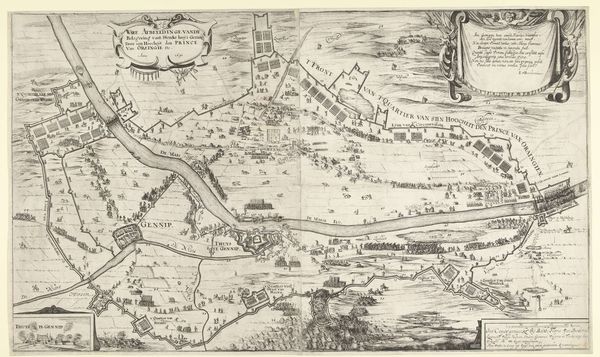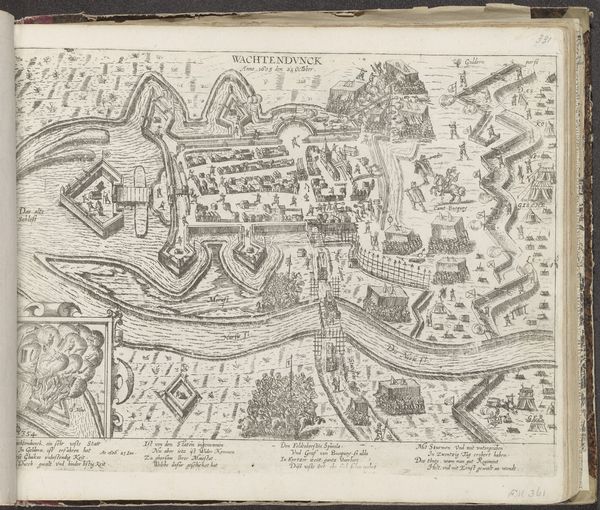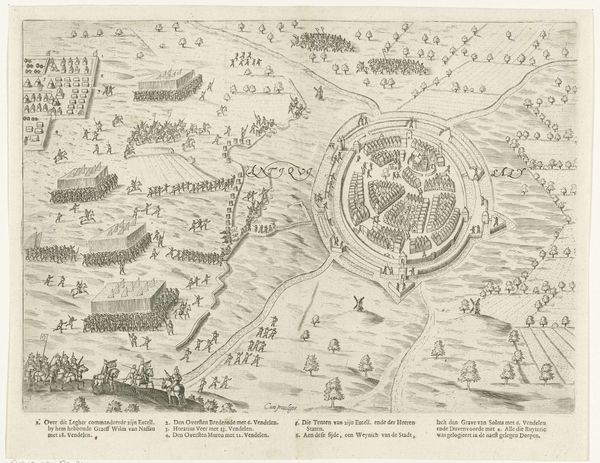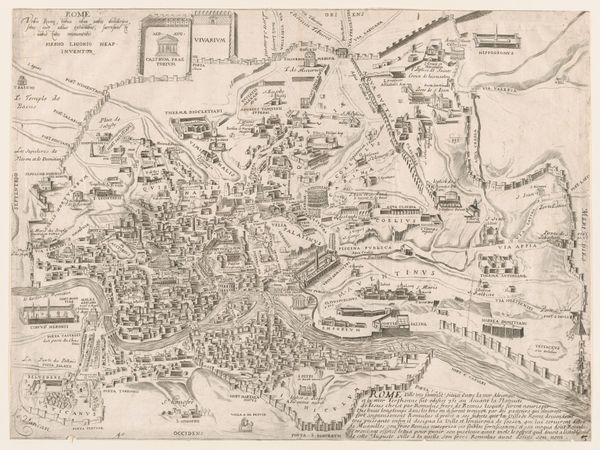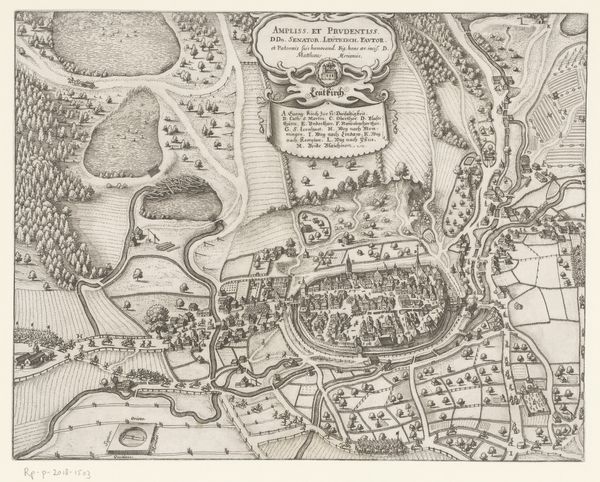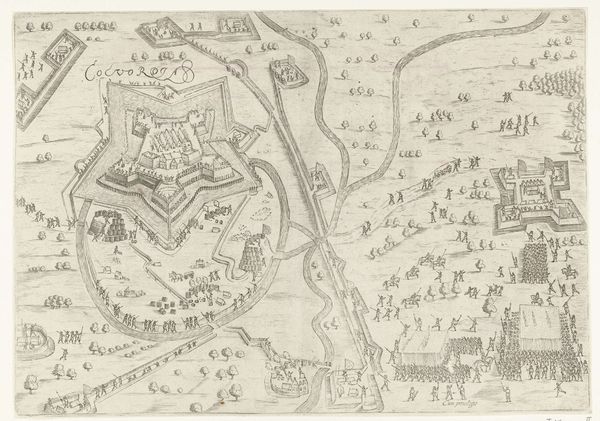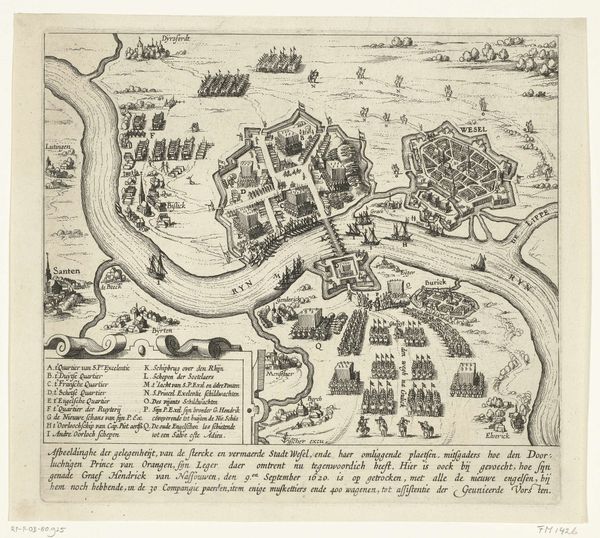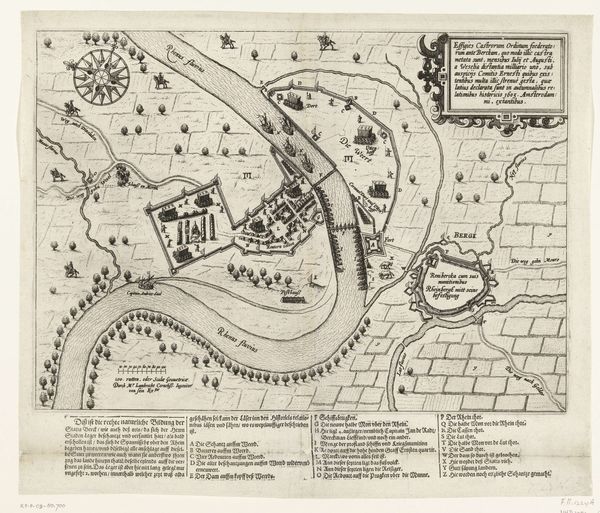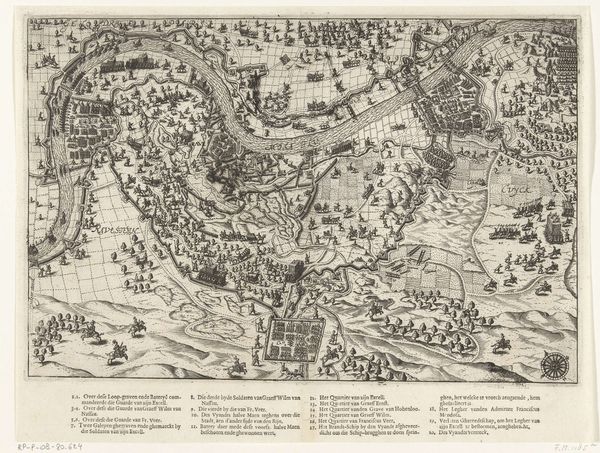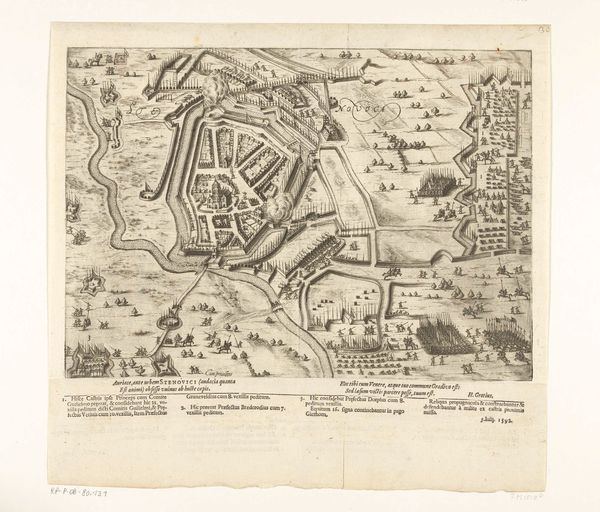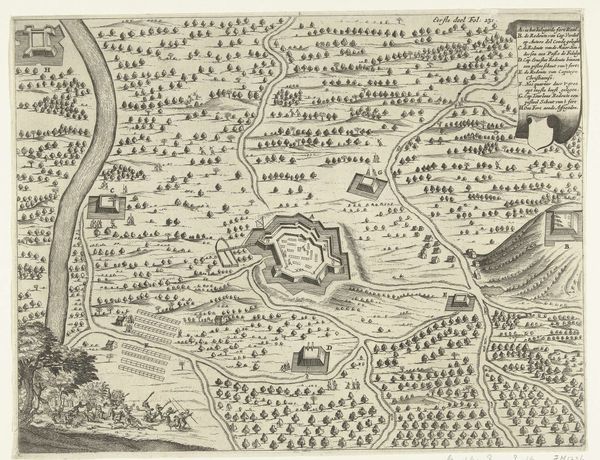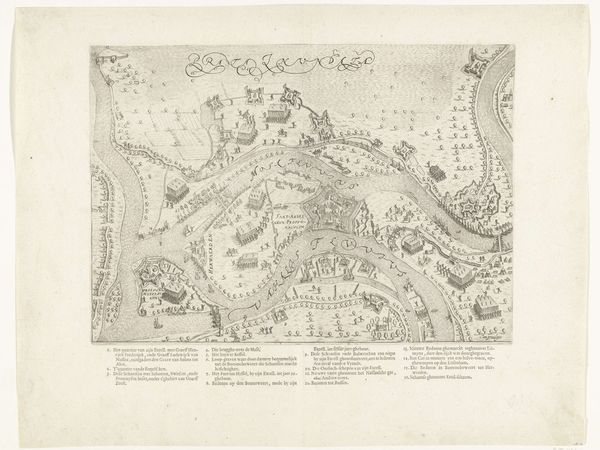
print, engraving
#
dutch-golden-age
# print
#
old engraving style
#
landscape
#
line
#
cityscape
#
history-painting
#
engraving
Dimensions: height 310 mm, width 407 mm
Copyright: Rijks Museum: Open Domain
Curator: This intricate engraving offers a bird's-eye view of the Siege of Coevorden in 1592. It's attributed to Pieter Bast and likely dates from 1600 to 1610. The original resides here at the Rijksmuseum. Editor: My first impression is how meticulously rendered every element seems to be. It’s almost unnerving, this omniscient, almost sterile depiction of conflict. Curator: Indeed. That level of detail is intended to convey factual accuracy. The symbols employed provide clues about the events. The star fort shape, for instance, indicates modern fortress design for that period, a defense against cannon fire. And all those tiny figures, arranged with geometric precision—each one contributes to this sense of orchestrated conflict. Editor: Absolutely. And look at the materials: an engraving demands immense labor. The fineness of the lines, the pressure exerted to transfer image to paper... consider the number of impressions made! It becomes a repeatable image and an object with a value and function determined by distribution and consumption. Was Bast present for the siege, I wonder, or did he recreate the scene later from descriptions? Curator: It's probable that Bast compiled various accounts and maps to construct this composite image. Remember, accurate depictions of sieges held strategic significance, detailing the besiegers’ approaches. They were as much about propaganda and preserving national pride as objective reportage. Editor: Right. Think about the implied power dynamic involved in viewing this scene from above! Someone is claiming authority, literally taking the higher ground, both during and after the historical battle. And how does that affect the work's lasting impression? The level of craft itself almost obscures the realities. The sheer impressiveness perhaps helps rationalize violence in service of the Dutch cause. Curator: The symbols do more than illustrate military tactics. They contribute to a narrative – a culturally sanctioned history— reinforcing a collective memory of Dutch strength and ingenuity against its Spanish opponents. It turns chaos into orderly design, so to speak. Editor: You've provided great insights! It really pushes me to reflect on who commissions such objects and who they reach—who possesses the material agency of art and battle, and who is effectively consumed? Curator: Indeed. By interpreting the historical significance of the images and deconstructing its creation, it's clear that 'Beleg van Coevorden, 1592’ offers rich potential for contemplation about nationhood, production, and collective cultural identity.
Comments
No comments
Be the first to comment and join the conversation on the ultimate creative platform.
